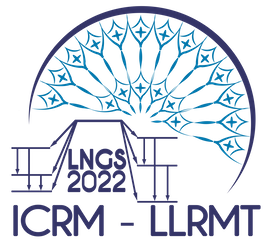Speaker
Description
The SABRE project aims to produce ultra-low background NaI(Tl) scintillating detectors to carry out a model-independent search for dark matter through the annual modulation signature, with an unprecedented sensitivity to confirm or refute the DAMA/LIBRA claim. This means achieving the lowest background rate ever reached for a NaI(Tl) detector, of the order of 0.1 counts/day/kg/keV in the energy region of interest (ROI) for dark matter searches (1-6 keV).
Direct counting of beta and gamma particles with the SABRE Proof-of-Principle detector, equipped with a liquid scintillator active veto and operated at the Gran Sasso National Laboratory (LNGS), has already demonstrated very low internal radioactivity for the so-called NaI-33 crystal. In particular, the amount of $^{\rm{nat}}$K content, determined by direct counting of $^{40}$K, is found to be 2.2 ± 1.5 ppb (or < 4.7 ppb at 90% CL), which is the lowest level ever achieved in NaI(Tl) crystals. The liquid scintillator veto was initially proposed to effectively reduce the $^{40}$K background from a predicted contamination of $^{\rm{nat}}$K at a level of 10-20 pbb. As presented here, data acquired for about one year with the NaI-33 detector into a purely passive shielding made of copper, polyethylene and water (PoP-dry setup), have shown that liquid scintillator veto is not necessary for NaI(Tl) crystals with a potassium contamination of the order of that of NaI-33. Moreover, preliminary studies of the purification of NaI powder by zone refining demonstrated that such contamination can be further reduced, lowering its contribution in the ROI by about a factor of 10. This is not the case for $^{210}$Pb instead, which is reduced by zone refining by only a factor of three and, to date, remains one of the leading background for NaI(Tl) crystals in the ROI for dark matter searches. Starting from the study of the behaviour of the $^{210}$Pb contamination during the zone refining process, we are developing a specific method to reduce such contamination to a negligible level.

